CanJam comes but a few times a year, presenting so many audio enthusiasts with the opportunity to try new gear, meet people from all walks of life, and most importantly to have fun! This year's CanJam in Southern California returned to the Marriott Irvine, boasting a record-setting number of brands represented in a CanJam up to this point.
I have visited a few of the CanJams hosted in the United States over the last year. This one had a lot of hype around it due to so many notable releases and debuts. Flagship headphones, in-ear monitors, and the juice behind the music littered the Grand Ballroom floor.

Audeze
Every CanJam, I look forward to feasting my eyes on Audeze’s table. Their array of headphones and gear end up being highlights of the show floor with each subsequent appearance. I do have quite the history with owning a variety of their headphone releases over the years, as I mentioned to Peter James (Director of Marketing at Audeze) while touring Audeze’s display space. I have had positive experiences with Audeze headphones and earphones, even if they aren’t always my favorite option at every price point.

First and foremost, I had the opportunity to try Audeze’s current collaboration with Manny Marroquin, the MM-500. The MM-500 has great frequency response (FR) target adherence, especially in its shape. I heard it as a bit warm relative to what I perceive as neutral, with some additional mid-bass energy down low, and a non-fatiguing treble beyond the pinna gain region. If I could have any Audeze’s FR in a flagship release with LCD-4 technicalities, the MM-500 is my favorite in that regard. Primarily because it takes what the LCD-5 did for target adherence and tilts it just a bit warmer. I do like the bass tuning from the MM-500, but I do think I would EQ a sub-bass shelf to increase the response from 20-100 Hz just a bit more since most headphones don’t seem to have enough sub-bass for my tastes. The stage wasn’t overly exciting or exaggerated. What I did enjoy was a similar phenomenon to the LCD-5; spacious enough in layering for hi-res music, accurate enough to use it as a tool for music production. The biggest difference is, I did prefer the resolution jump to the LCD-5, which could be due to the pads, nanometer diaphragm thickness, and potentially some changes in damping schemes.

I had the opportunity to reach my conclusions on the MM-500 vs LCD-5 on two different amplifier-and-DAC all-in-one units. In both instances, I preferred the LCD-5 to the MM-500. The Violectric V590 MK.II on one side, and the Nagra Tube DAC with additional Classic PSU on the other side of the display space. I have a vague familiarity with both from my time at CanJam NYC in 2020.

When I compared both to each other, I felt the LCD-5 was more speaker-like in having a head-stage that encroached towards a center image in front of you with a wide arc angle that felt like your ears were catching the decay. Conversely, the MM-500 was perceived to be a bit more left/right polarized in stage presentation, lacking in bass impact with a “deadening filter” on the music. I feel like the relative lack of excitement going on in my listening experience is an intentional choice, given the marketing materials pointing towards this being a pro audio tool.
With this partnership, Audeze continues to excite me with what’s next up its sleeve, regardless of its direction.
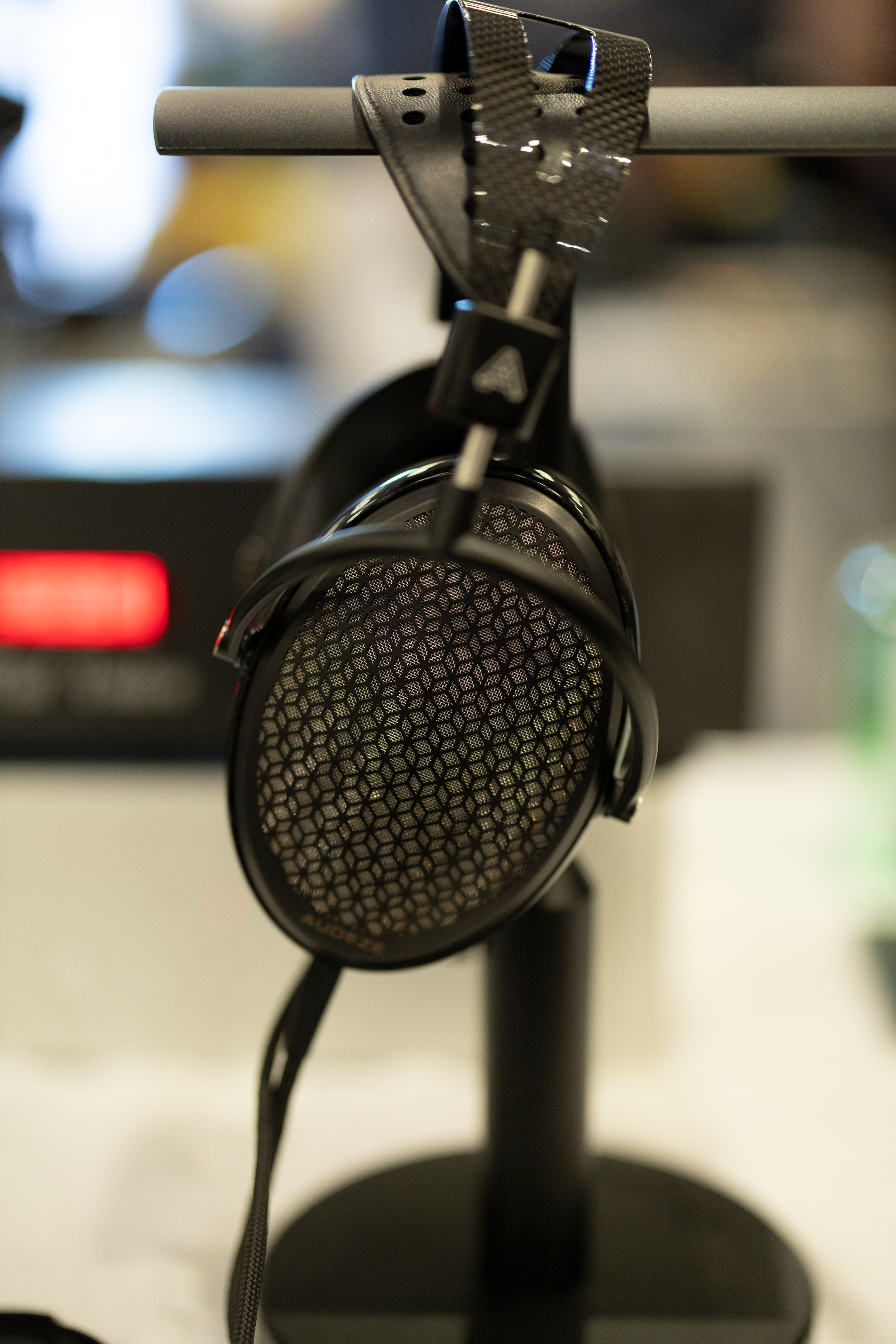

Additionally, I had time to enjoy the CRBN again on a stack composed of the Mal Valve Headamp and Denafrips Terminator II. This pairing impressed me more than the times I heard the CRBN paired with the Linear Tube Audio Z10e. I cannot say for sure if I would prefer this to the Mjolnir KGSSHV Carbon I heard last year, but I certainly have more emotional attachment to the Mal Valve experience powering the CRBN. While the Audeze electrostatic headphone may not the prodigal child of the estat-aficionados, I would be pleased to visit Audeze’s booth at every audio event I attend in the future to assess the CRBN with additional stacks and listens.
Audio-Technica
My visit with Audio-Technica (A-T) started just a bit before the show opened on the first day of CanJam SoCal, as I spent some of breakfast with both Dan LeBlanc and John Tarulli of A-T welcomed me to the “show” while I calibrated my camera to the lights in the Grand Ballroom.

On display for A-T was an assortment of new releases and old favorites. I sat down with the flagship open-back ADX5000 connected to their AT-BHA100 and AT-DAC100 stack, allowing the re-contextualization of A-T to wash over me. I appreciated my time with the ADX5000 even if the tuning was a bit bright for my tastes. The bass and mids were on-target enough to not totally detract from my listening experience. I felt there was a lot of detail extracted with the headphones, even if the gear was unfamiliar. Smaller sonic cues were easily noticeable in my most musically dense tracks. I felt like vocals had a bit too much sizzle, some might say sibilance, but there was a lot of extra treble energy from 8-15 kHz. Cymbals were extra tizzy, and I honestly wished I could’ve engaged some subtractive EQ to improve my experience with them. The ADX5000 is a comfortable flagship headphone to wear, but unless I had a curated chain with the option for some EQ, I think I’ll continue to pass on owning one.

Alongside the ADX5000 was the R70x, M50xBT, AWAS, AP2000TI, WP900, and the AD700x. I didn’t have the opportunity to try all of their headphones, but I was elated to finally get a direct comparison of the R70x to my Sennheiser HD580.
Bloom Audio
I am always eager to catch up with Andrew DiMarcangelo every time we cross paths. This CanJam, Bloom had an Astell & Kern ACRO CA1000 to show off the Dan Clark Audio Expanse, Hifiman Sundara Closed, and a handful of other headphones and in-ears. My experience with the Sundara Closed was the most memorable, even if it was the most negative of the whole show. Also displayed were the Campfire Audio releases: Supermoon and Trifecta.

The Trifecta was also in the bottom tier of CanJam experiences for an in-ear, simply because I could not get them to fit in my ear. I tried for a couple of minutes to get a good seal, and there was no feasible way of comfortably wearing that in-ear.
Supermoon, on the other hand, did fit me, and I didn't mind listening to a handful of tracks on the CA1000. The Supermoon sounded very average for an in-ear, with technical ability that didn’t disappoint. I felt that the worst thing about it was that it didn’t stand out from other in-ears at the show. It sounded like a high-end in-ear, but didn’t have defining characteristics to take it above something like Dunu’s Zen Pro.
Crosszone
I briefly stopped by Crosszone’s table to use my Focal Utopia in contrast with the Crosszone CZ-1 using the table’s Riviera AIC-10. To conduct the comparisons, I used their laptop equipped with Tidal to assess the two headphones. While the Utopia sounded incredible on the Riviera, the CZ-1 fell a bit short. However, they were extremely comfortable to wear, and I found the driver combination to give a very large stage presentation pushed towards the front of my head. I felt the treble was a bit too strong, the feeling I got was akin to a super-tweeter pushing up the 12-18 kHz area such that I got fatigued listening after one test song. However, these were a warm pair of headphones that I feel like I could get my dad to rock out to Pink Floyd with.


Finally getting to hear the Riviera AIC-10 was a highlight of the show, as it was in my short-list of amplifiers to consider when I was considering an endgame amplifier.
Dan Clark Audio
One of the big releases of CanJam SoCal this year was the Expanse, a new open-back planar magnetic headphone from Dan Clark Audio (DCA). I want to disclose I have owned a handful of previous Dan Clark headphone releases, ranging from the original Aeon closed to the more recent Ether 2. The Expanse to me sounds like it has FR lineage to the Ether Flow Open 1.1, but with less claustrophobia going on in the mids. Compared to the headphones and gear options available throughout the show next to the Expanse, I felt the DCA lacked any kind of wow factor.


The handful of Expanse opportunities presented at SoCal resulted in the most melancholic moods I’ve had going to CanJams this year. Trying to recall my experiences of the Expanse post-event are difficult, because it was one of the most boring and unexciting headphones I tried. The bass and midbass bump by way of the electrical filter in the Expanse made the headphone sound like an EQ boost with no end-benefits to my ears other than simply having more 80-200 Hz energy hitting my ears. I don’t think dynamics are simply the addition of mid-bass, nor do I think you can “EQ in dynamics” to a given headphone driver, regardless of the distortion character of its stock FR.
I applaud DCA for consistently being the comfiest planar magnetic headphones. At this time, I may not thoroughly enjoy the subjective experiences in the headphone lineup because of the damping or tuning schemes used in them. I feel the macrodynamic qualities are choked by the thickness and density of the physical damping materials used in the surrounding driver volume. Consequentially, the amount of damping also seems to tarnish the microdynamics as well, since it feels like the only thing I’m getting out of a higher acoustic impedance in the sonic chamber is a more expensive power bill for a frequency response that adheres to favorable reviewers’ personal infatuation with the Harman target.
I heard the Expanse enough times to use it as a control for other headphones on the same gear. In the same way you temper your expectations of a flagship headphone experience by using a lower-end headphone in the time leading up to accentuate the differences, the Expanse was used to be the control group for my level of excitement against other headphones at the show. Having a distinct mental image of the Expanse yields an undefined grey mosaic of noise.
I feel Dan and I have fundamentally different opinions on sound reproduction. I can and will always applaud the new and innovative ways Dan is improving his headphone lineup, one release at a time.

dCS
Showcasing the new Lina stack at many headphone booths across the CanJam event spaces, dCS also had their own private listening room away from the main show floor. I previously had experience with the Bartok headphone amplifier and DAC combo unit and thought decently of it in 2020. In the process of my taste refining, I also found myself falling out of favor with the dCS house sound.
The Lina stack sounded like an overly polite hi-fi experience. When I paired headphones like Hifiman’s Susvara, Audeze’s LCD-5, my Focal Utopia, or any other headphone at the show that was familiar to me, I felt there was a smoothing filter put on the songs I was listening to. Emphasizing this further, the Lina seemed smoothed over to the point where music felt a little dead, dynamically compressed, and tilted upwards in the audible frequency range. Maybe it was because of one gate-keeping thing or another, but with the tools at my disposal at CanJam, I came away from the Lina experiences a bit bummed that some other setups right next door to it sounded more engaging at 1/10th the cost.

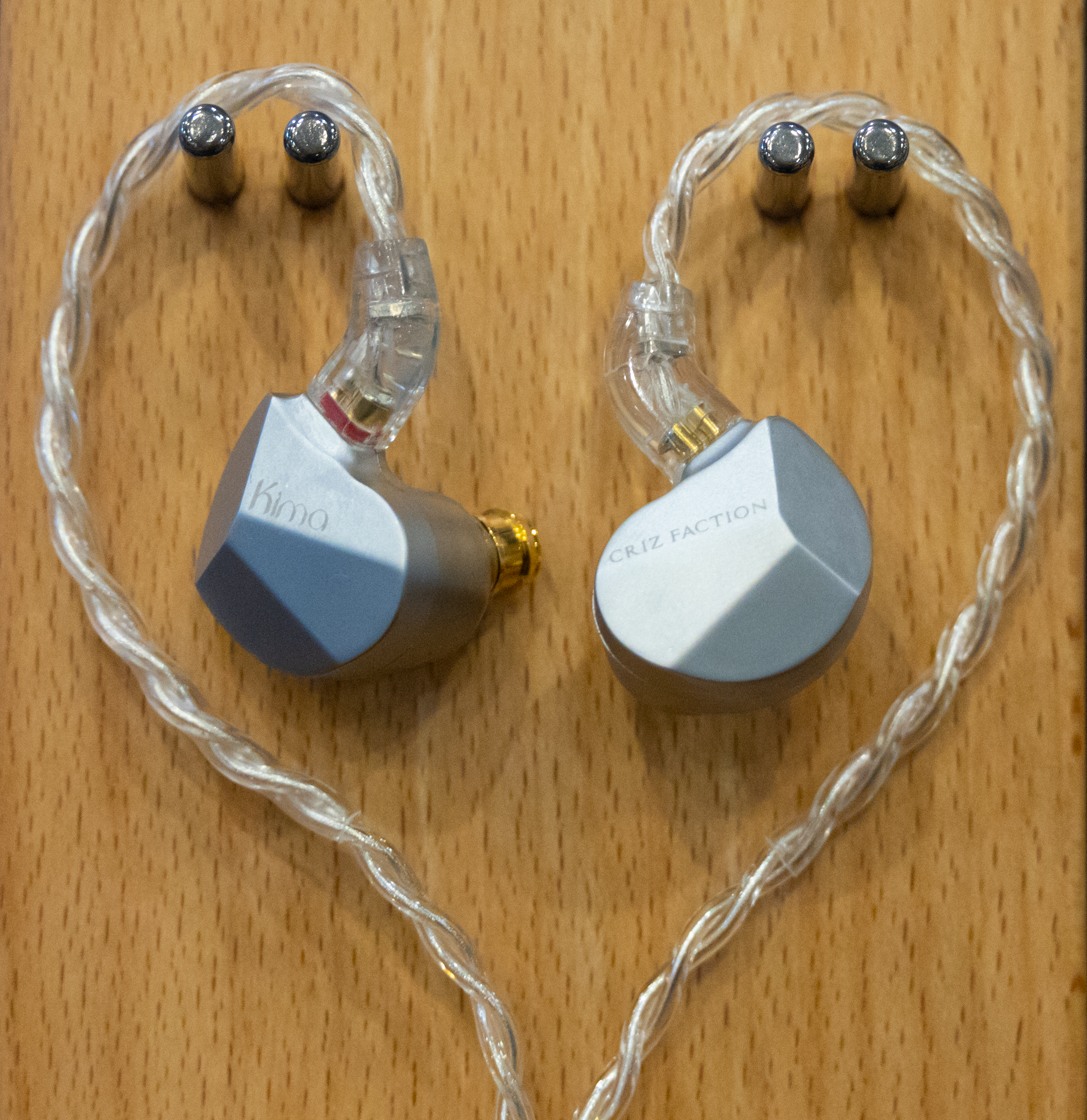
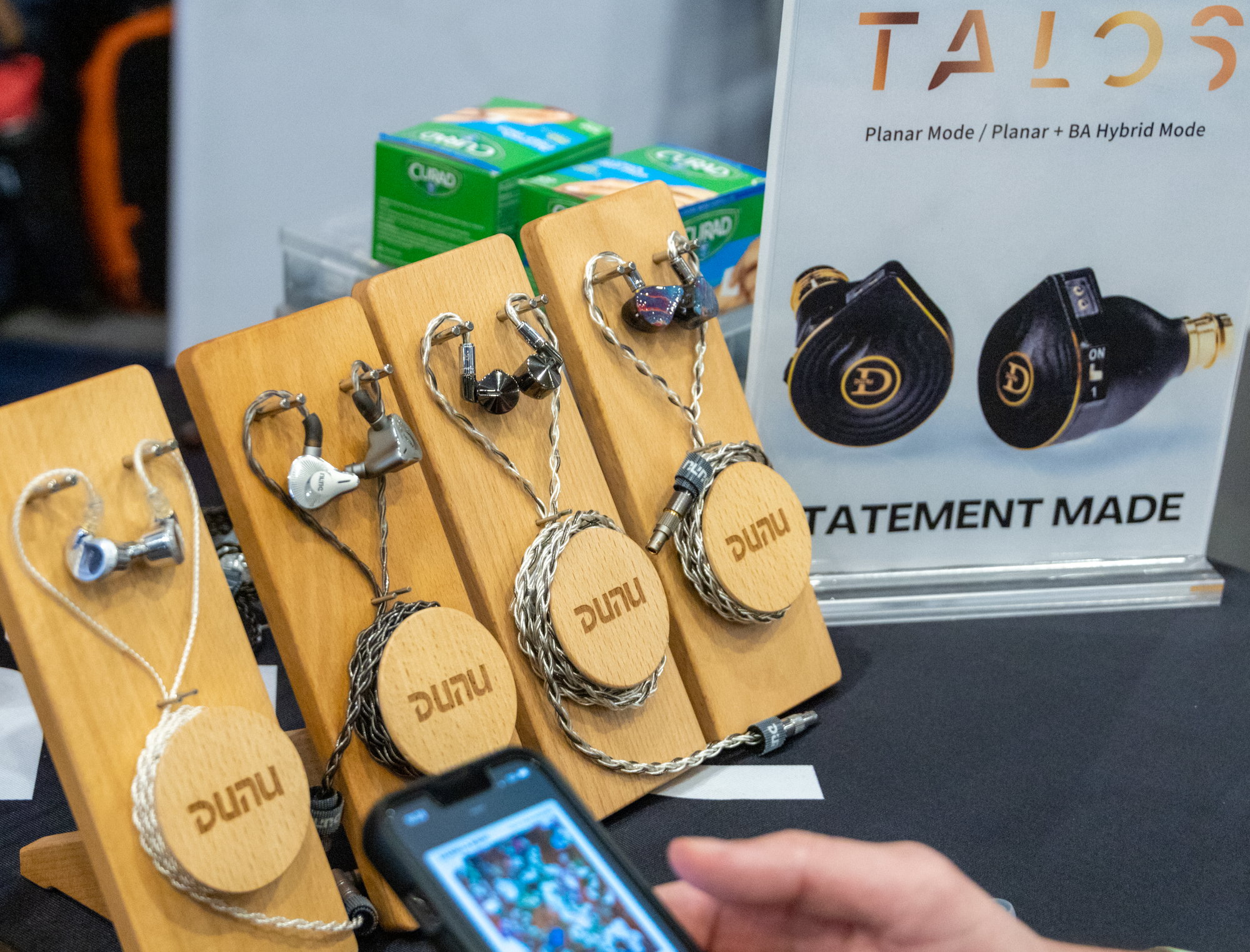
DUNU
A personal favorite destination every CanJam is the Dunu ensemble of in-ears. I was blind-sided in 2020 with the Luna, I came away from last year’s SoCal buying a Falcon Pro for my significant other, and in New York earlier this year I bought a Hulk cable for the Luna and Sony IER-Z1R.
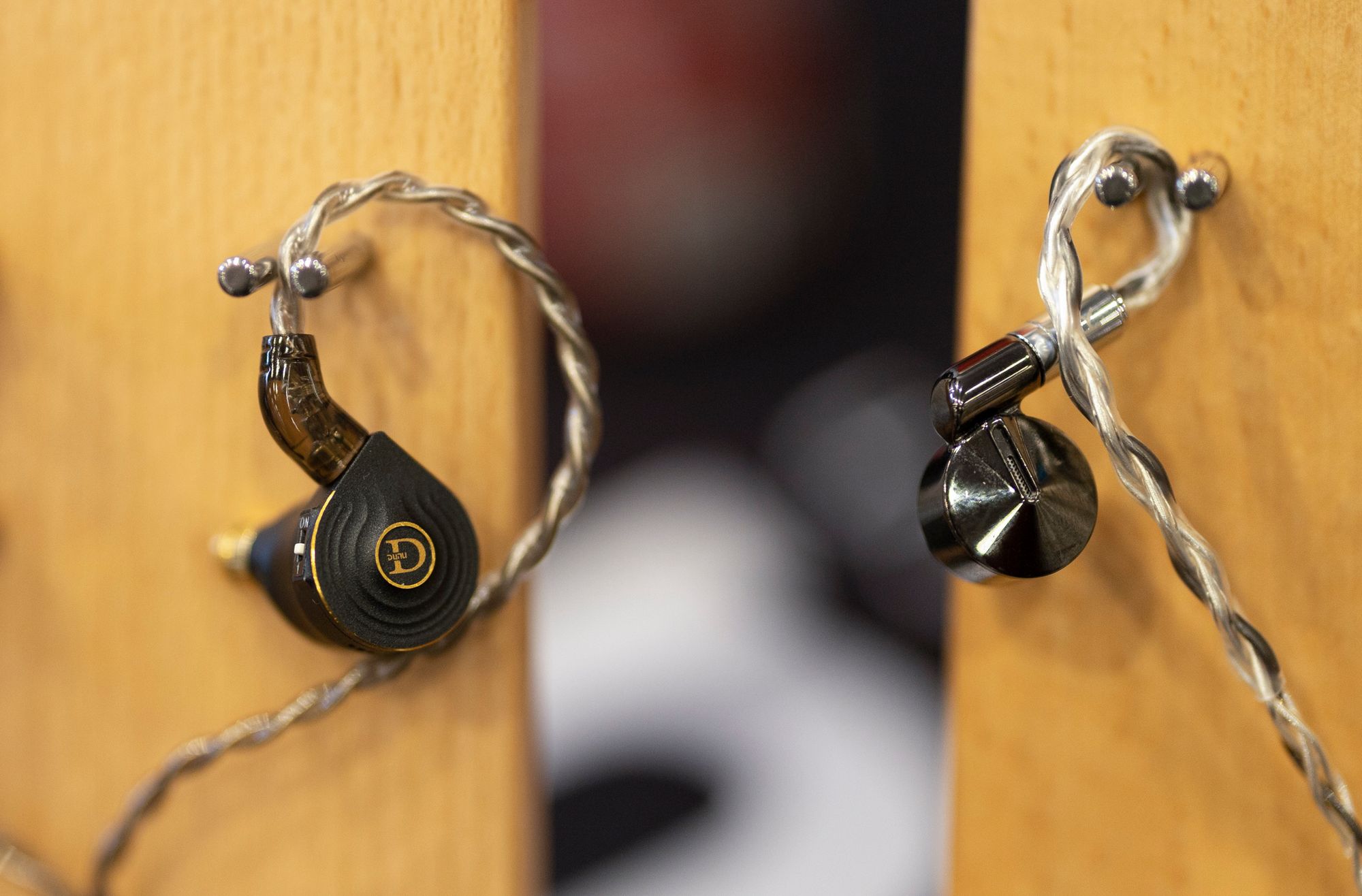
At this event, Dunu showcased the Kima, Talos, and something up and coming that I’m sure you’ll learn about in due time. While I found the Kima to be a pleasant warmer in-ear, I think the surprise for me was the Talos. I didn’t expect to like a planar in-ear as much as I did, considering how much I adore the single-DD Luna. Compared to the 7Hz Timeless, I enjoyed the Talos after getting a fitment tutorial from Kevin. The Talos would replace my Skullcandy JIB as my regular chill-fi kind of in-ear. When I don’t need to be the most critical, when I just want to comfortably listen in a productive setting, I am surprised to be so positive for the Talos. I don’t disagree there are caveats, like the BA tuning switch not working for my preferences or the deeper fit not working out with everyone’s ear shape or comfort tastes, but my handful of songs through the lens of the Talos left me shocked. If a flavor in-ear is what they were going for, then the mission was accomplished.
Eletech Cables
Highlighting a cable company at an audio show already takes some guts. I’ll admit, I dabble in some cable shenanigans both at home and on the road.
At Eletech’s booth, my eyes immediately were drawn to the Inferno headphone cable. I have been looking for a cable alternative to the Corpse Gravedigger and Moon Audio Black Dragon for my Focal Utopia. It took one song for me to be sold on the Inferno, after spending years with the cables from Corpse and Moon. Even though the potential lack of ergonomics for other users might influence your decision against the cable, I was surprised with the additional information the Utopia picked up with the Inferno. After trying aftermarket options from Atlas, Danacable, Kimber, and certainly others I can’t even remember; I am very happy I tried this cable option on the show floor, even under suboptimal conditions.
FatFreq
A brand I was introduced to through the annals of discord was FatFreq. Specifically, I heard that the Maestro Mini was a bass-heavy in-ear that had bass accentuation like a sub-woofer, even if the impact of the bass was a bit soft. I loved it for a similar use case like the Skullcandy JIB and Dunu Talos, except a bit more like a high-end JIB. Considering the asking price, if you want a bass-heavy in-ear and want to support FatFreq over the likes of a Campfire Vega or Atlas, or running the risk of fake Beyerdynamic Xelentos across the used market, please consider the Maestro Mini for your bass-head pleasures.
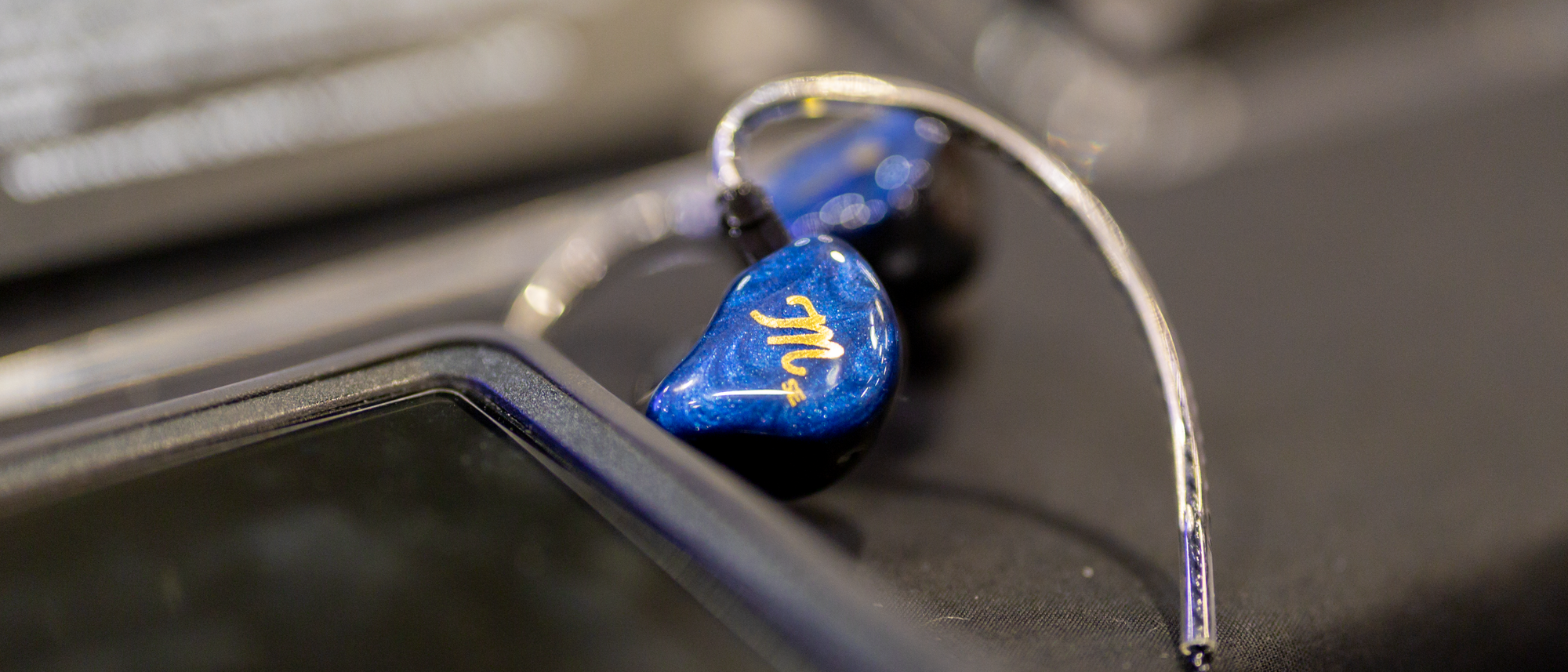
Furthermore, I got to try the Maestro and Maestro SE. Between the two, I liked the SE more for being an evenly tuned in-ear with a tastefully done accentuation of sub-bass. Had I not already committed to buying a different in-ear, this would be an in-ear I’d be daily driving at work.
I had a blast in my small-talk interaction with the FatFreq crew at their booth, and I hope they see continued success in their approach to bass in the in-ear audio space.
Feliks Audio
Several booths this CanJam featured the new Feliks Audio Envy 300B tube amplifier, and it’s no surprise why. Go over a simple checklist of typical audiophile desires in a tube amp, and the Feliks Envy has it. Wood chassis? 300B? Smooth volume control? XLR jacks? Check them all.
But, how does it sound?

Consider me suckered into what Feliks has going on with the Envy. It was warm and lush with headphones like my Utopia and made the Meze Elite and Susvara cozy listens. Granted, I still like where I have gone with tube amps, but this was the first Feliks Audio amp I didn’t mind being all over the show floor. To me, the Euforia and Elise are both quite loose and flabby in the bass, and part of me wonders if that’s because of the tubes typically paired with them and the owners desiring that kind of sound coloration. I like the Envy, even though I may not own one, nor pursue future opportunities to hear it.
Focal
Another major release in SoCal this year was the Utopia 2022.

First, the new cosmetic look. One of the things that is a bit murky with the previous Utopia versions between the pre-2020 and 2020 SKUs is that the headphones are cosmetically identical from a distance. Next, the included accessories on the 2022 SKUs are in line with modern Focal releases like the Clear MG, Stellia, and Celestee.
My concern, however, was in the sound. If you own the Utopia and want a slight downward-tuning tilt applied to the Utopia sound signature, then the 2022 variant is something to consider. I don’t necessarily love the new aesthetic, and the sound of the new Utopia is a bit of a letdown considering the initial rumors of a Utopia sequel. To me, the 2022 Utopia underwhelmed me, and in some cases disappointed me. The bass sounded warmer, but it sounded like it had a little less impact. At the other end of the spectrum, the treble seemed like it was muted, borderline muffled compared to the original. In the midrange, the 2022 didn’t necessarily fix some of my gripes with the original and how vocals come across as a bit honky because of the 1.2-1.5 kHz hump. I understand that a lot of customers out there mentioned not being able to play the headphone as loud for their tastes, as they experienced audible driver clipping when they would listen at those louder SPLs. I do not experience these issues, but I also listen quieter, so I will continue to cherish my Utopia until it inevitably dies and probably never own a Focal audio product again due to their warranty policy.
Headphones.com
The last time I saw the Headphones.com team was about a year ago in SoCal, and they debuted the Zähl HM1 headphone amplifier. Calling it a headphone amplifier is a bit of a disservice because of how feature-rich and overbuilt the amplifier is for the occasion. The HM1 comes from a special pedigree of audio appreciation. Michael Zähl is a legend in his own right in the professional audio world. Receiving praise for his amps in the hi-fi audio appreciation space feels like we’re on the precipice of something spectacular to be in the hands of audio enthusiasts who want to throw down the cash to buy it.
This year, it was paired on the show floor with the Hifirose RS250 network streamer. After multiple data points now as I compose this article, I can comfortably say this amplifier is my endgame solid state for the use cases I plan to employ it in. I want a professional solid state that can work with planar magnetic and dynamic driver headphones sensationally while being analytical enough to appreciate as a hi-fi component. The icing on the cake belongs to all the features on the front of the amplifier, with even the potentiometers being hand-selected for performance reasons.
Aside from the Zähl HM1, Headphones.com had a healthy display of in-ears, over-ears, desktop tube amplifiers, and even a turntable they gave away. Also, not to mention a full roster of employees to cover and interact with CanJam and its attendees. The whole team deserves a shoutout for the volume and variety of things available to try at CanJams.
Hifiman

I started day two with a visit to Hifiman’s booth, showcasing the EF400 and various kilo buck headphones. I tried the Arya Stealth, HE1000SE, and reacquainted myself with the Susvara on new gear at their tables. This visit didn’t last too long after messing with the filters on the EF400, as I felt the NOS filters helped correct a lot of flaws I find present in the Arya, HE1000SE, and Susvara. I found the NOS modes shifted the tuning towards a smoother and more relaxed sound and seemed to take the edge off the treble in the headphones on display. I wasn’t a total fan of the amp/DAC combo for the headphones I brought to the show floor.

For those looking for a one-stop shop, if you already like a Hifiman headphone, consider the EF400 as a potential pairing with them. At the very least, try to find one for a demo somewhere and see if you like what it does in the various modes.
iFi
While iFi didn’t have a dedicated table this year, I had a solid chunk of time CanJam weekend to talk to Brandon and Connor from iFi. I found out I wasn’t the only one that used an iFi Gryphon for car audio! It was excellent to run into either of them as we had our own paths throughout the show floor, and I hope to be in touch with either of them soon.
Meze
The Meze 109 brought a small crowd of folks to every booth it was displayed at, including Meze’s own space. Unfortunately, I didn’t come away as impressed with it as even my brief demo of a pre-production unit at CanJam NYC earlier this year. I found it to be a bit too warm for an open-back, with a major recession around 2 kHz for some additional soundstage that made vocals sound extra distant. Extra air treble fatigued me even in the small doses on the show floor with one or two test tracks, depending on the gear used. The MSRP upon release has been the subject of many a critique, and I can’t say I disagree with it. The current MSRP is $799 USD, and I feel like for that amount of money, there are other options that cater to my indices of music enjoyment more than the 109 Pro. However, I can’t deny the comfort of the headphone, its generally agreeable sound signature, or its similarity to the fashion-forward 99 Classics.
Modhouse Audio and Soekris Engineering
If there were two individuals I wanted to check off my list of “people I wanted to meet in the audio industry”, Soren and Ryan would top that list. Soren of Soekris Engineering had his newest series of R2R DACs on display, while Ryan had his Moon Audio Dragon Inspire IHA-1 connected to the Soekris dac2541. I have fond memories of the Soekris R2R DACs in my audio systems, and it was a bit ironic that these two gentlemen had the closest thing to what I own at home at the whole show. Also present at the table was a Flux Labs (no affiliation with me) amplifier that the flagship Soekris was connected to via XLR.
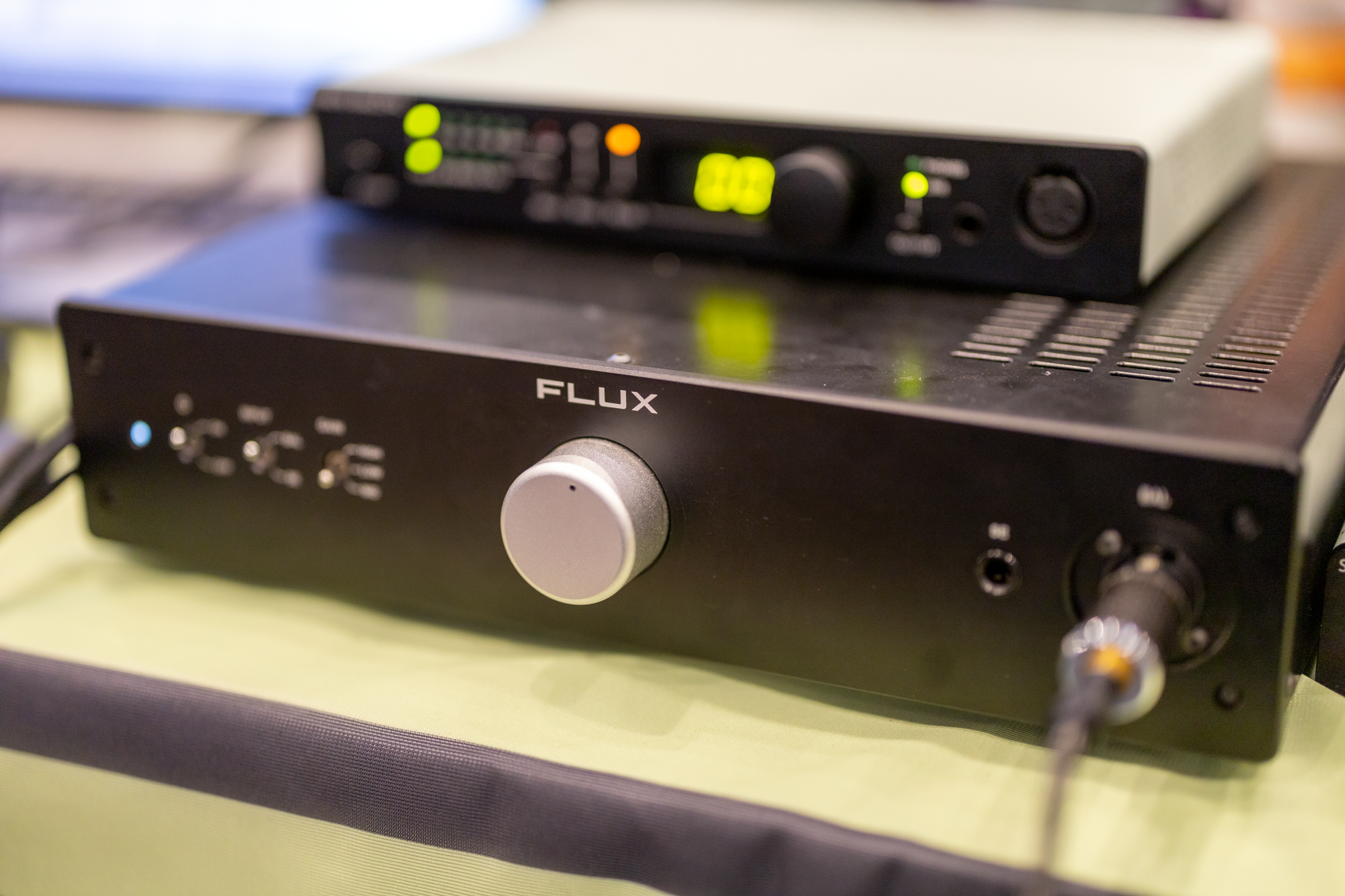


Ryan was also showcasing an early version of an upcoming headphone he was working on. Considering his influences and data points he was basing this project on, I found it to be HD800S-esque with a little sibilance present in the current iteration. I think CanJam attendees provided better feedback than I did since I had just come from a couple ofbooths with 5-figure signal chains. I want to personally thank both Soren and Ryan for making it to the show, as I felt their table was a serious reality check amongst booths that sported significantly higher price tags per component.
Moon Audio
The team and tables representing all that Moon Audio had to offer were on display in full force this year. One of the highlights for me was the Bricasti M3H, as it has quite a few similarities to my personal Bricasti M1SE. I tried a handful of headphones equipped with various Moon cables, most notably Audeze’s MM-500. If I were to have one component to pair with the MM-500, the M3H gave me the strongest sense of the chain being used for professional applications at the whole show.
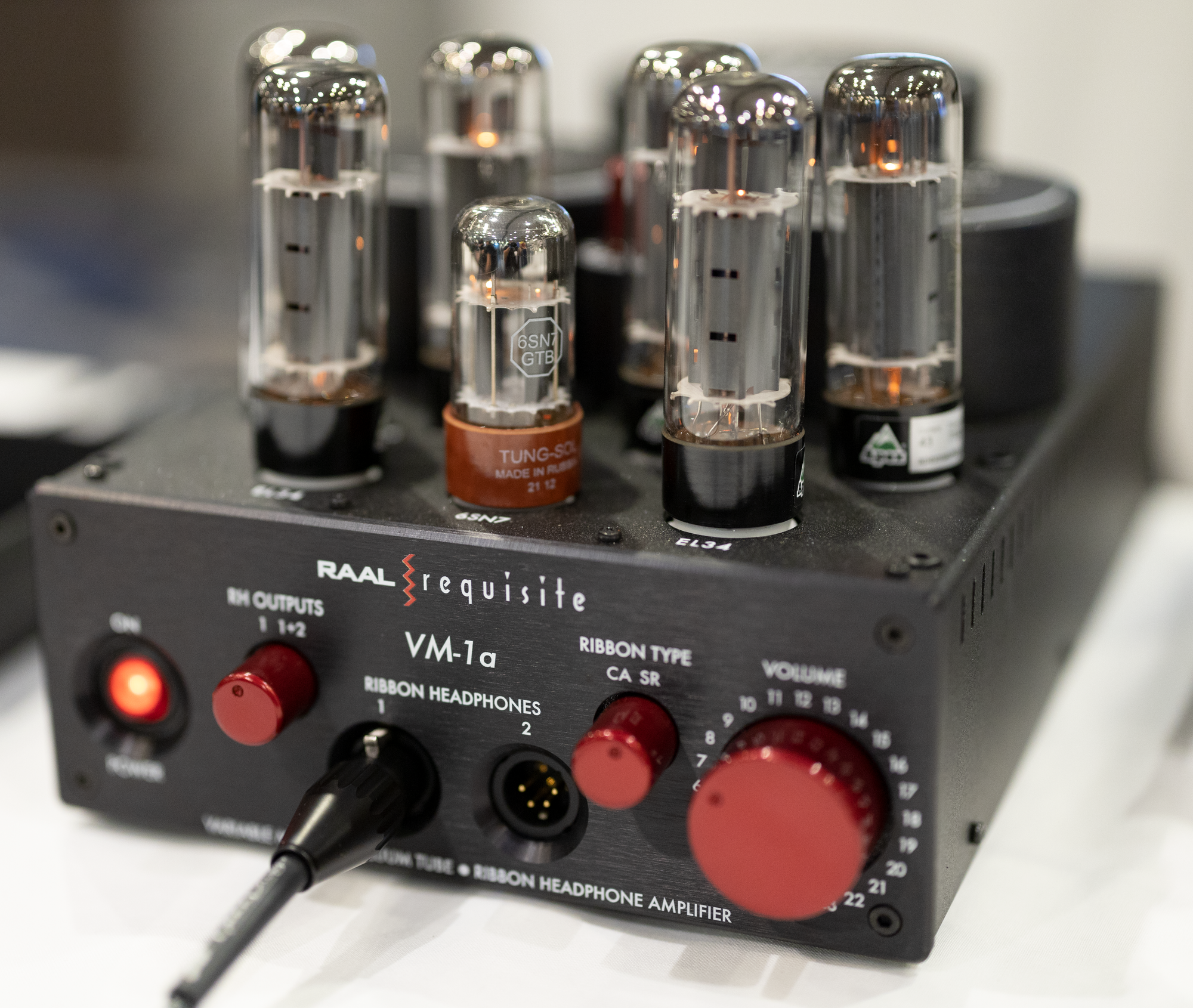


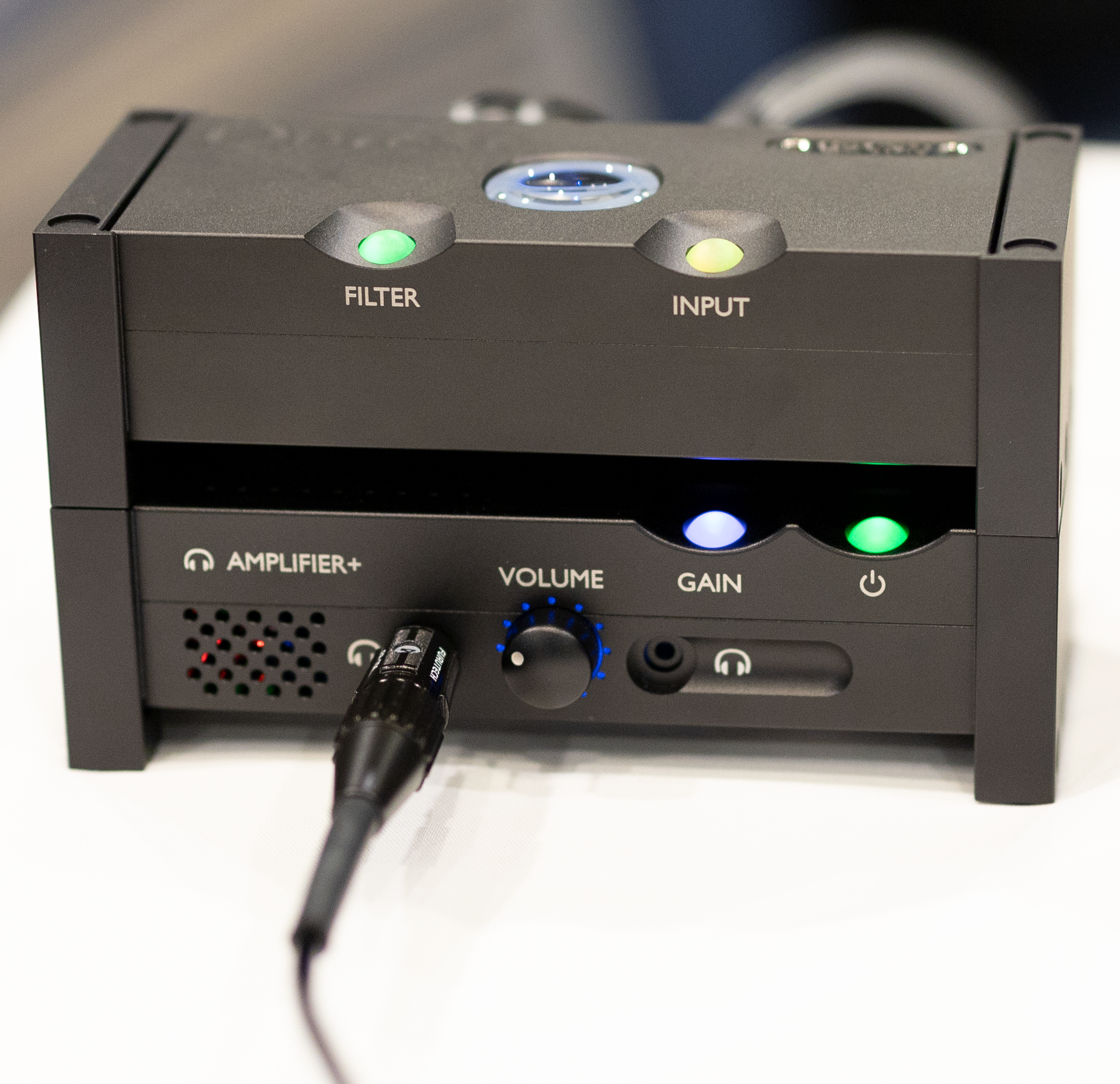
Also present was the RAAL SR-1A paired with the VM-1A Requisite tube amplifier. There were some internet issues at the time I stopped by, so I could really only assess how the amplifier felt to adjust. I would be keen to hear it in the future with the CA-1A should the opportunity arise.
RAAL-requisite
While my evaluation of the CA-1A occurred at The Source AV’s (TSAV) booth, I wanted to dedicate a section here to specifically talk about another significant release in the personal audio space.


The CA-1A was quite comfortable while placing it on my head, which is in stark contrast to the foreign nature of the SR-1A and its adjustment straps that just didn’t seem to sit right on me. One major detraction was in the CA-1A’s bass, which seemed to chuff if the first note of a song was a bass hit. When using Daft Punk’s Get Lucky, I noticed this phenomenon and it became something I couldn’t unhear. I keyed into listening for it the rest of the time the RAAL headphone was on my head. I found the timbre and detail to be much better on the CA-1A, but it still sounded quite off compared to my reference points from home. Even the WA33 and DAP couldn’t save it, which was a bit disappointing given the hype generated around it since CanJam NYC.
Roon Labs

I stopped by the Roon Labs booth to try out the Audeze LCD-5 and Meze 109 Pro on the dCS Lina stack fed by a Roon audio back-end source. I don’t have a whole lot to say in addition to what I mentioned in the dCS section of my CanJam coverage but using the LCD-5 and Roon’s player sound as familiar data points helped me triangulate just how off-putting the Lina was when paired with headphones I use regularly at home.
Schiit Audio
A few years ago, I was a full-on Schiithead. I owned their components like a collector and was happy tinkering with signal chains using Schiit gear. I have since flushed my Schiit, but still,I look fondly at the memories that were.

The stack that immediately caught my attention was the Folkvangr and Yggdrasil. I had been curious about the Folkvangr when it was first hinted to be in the prototyping stages. A transformer-less and capacitor-less tube amp that certainly took criticism on the chin from the folks that idolize low-distortion amplifiers, the Folkvangr managed to be a pleasant listen on the 300-ohm Sennheisers. It showed hints of potential with further high-end Schiit tube amplifiers down the line. I found the treble to be a bit hashy, and the combination of the whole chain could’ve attributed to that. However, what was pleasant was just being able to sit back with a stack of Schiit in front of me again.

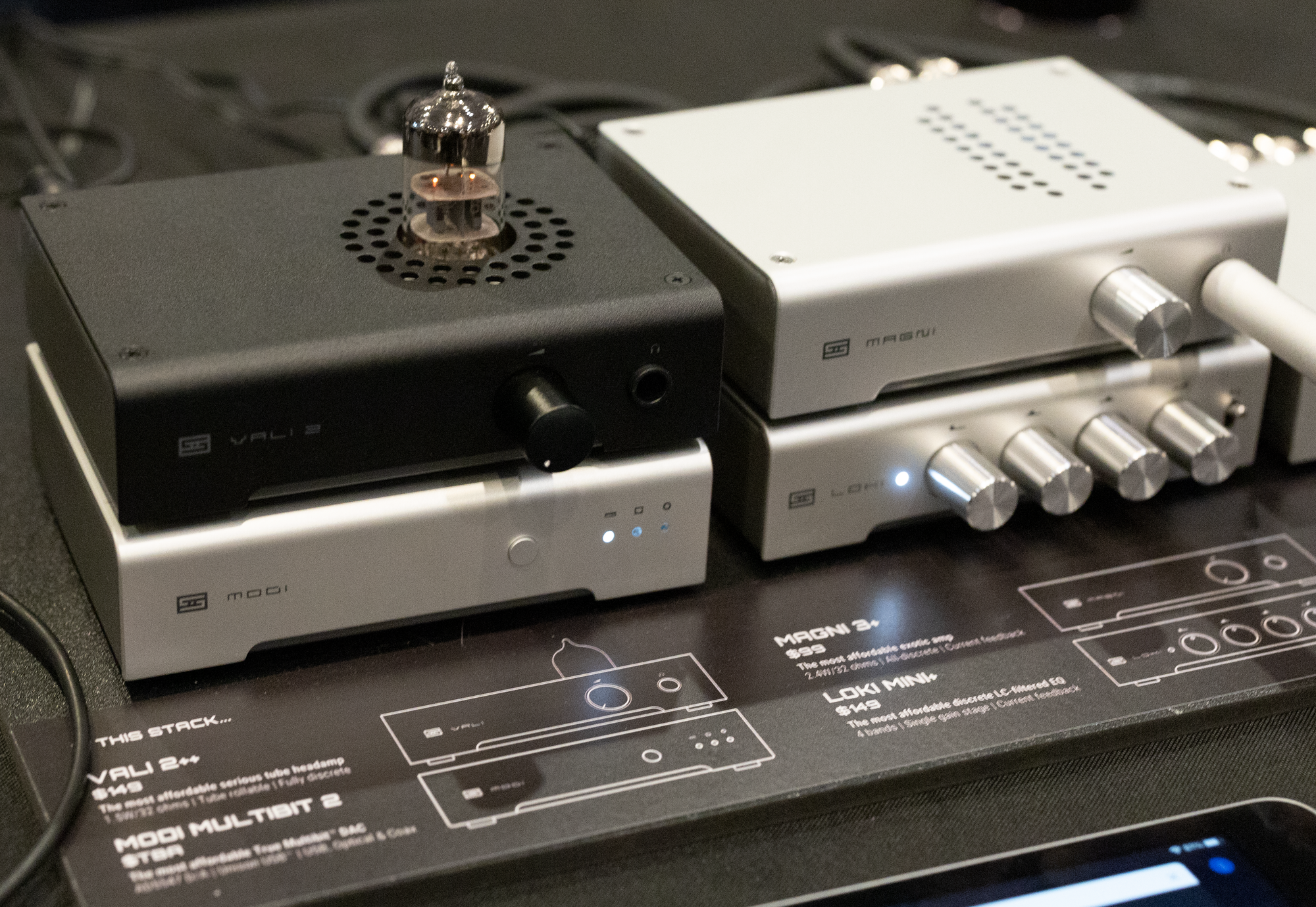
The rest of the table featured a Magnus/Lokius/Modius stack with the Sennheiser HD650 nearby, the newest Vali and Modi Multi-bit amongst a Magni and Sys for A/B’ing the components, and finally the new edition of the Lyr and Bifrost 2. While I have heard previous variants of each Schiit amplifier or DAC available for demo, I instead spent more time helping a younger friend in the audio community experience what Schiit had to offer.
Nostalgia played a huge factor in my enjoyment of Schiit's table.
Spirit of Torino
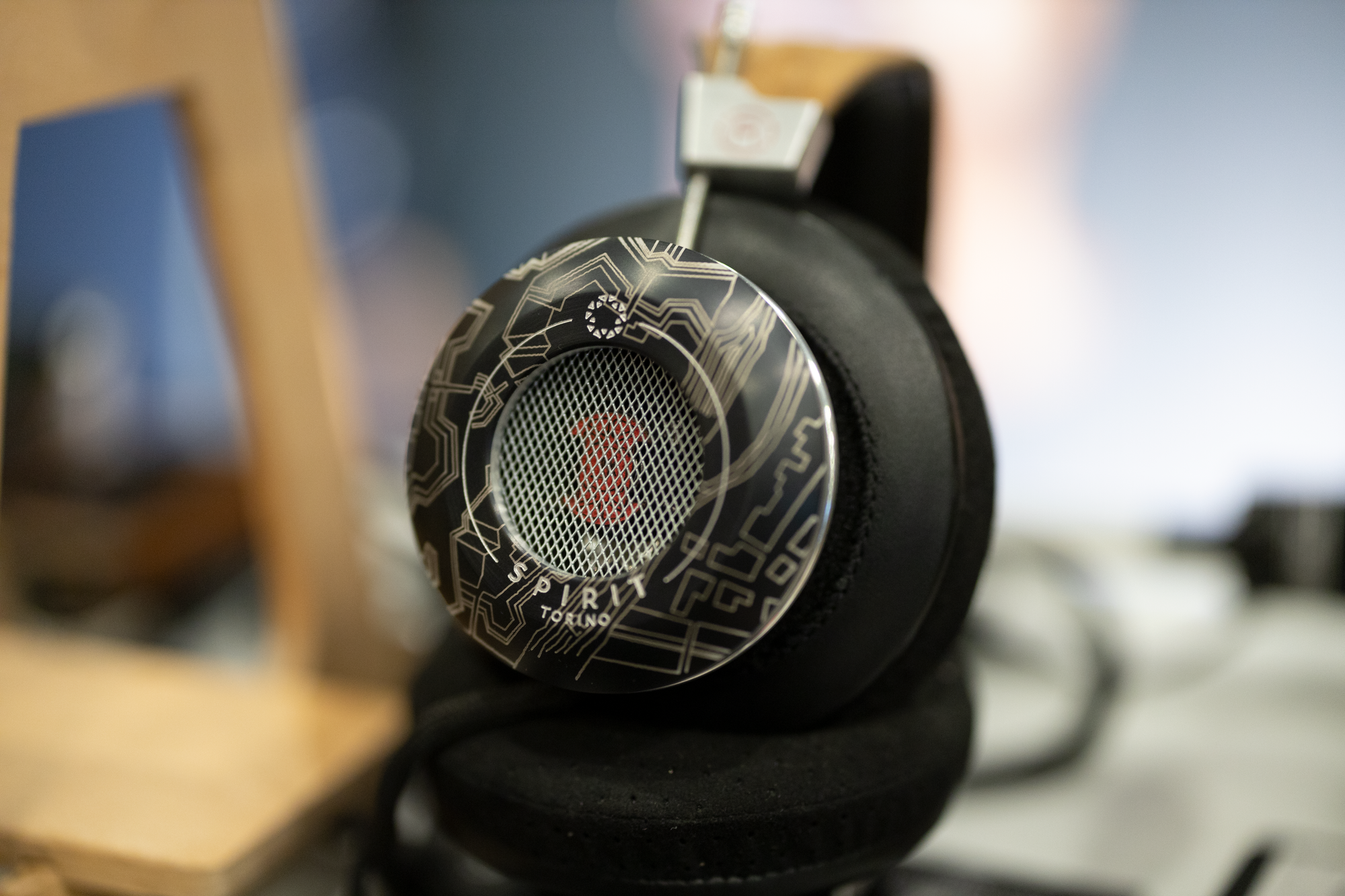
I want to cut straight to the point with Spirit. The four models of headphones I tried are tuned in a way that is so avant-garde to the point where I can’t stress enough how important it is to hear it before buying one. I don’t really know who these headphones are for, and my best assessment would be people who like the Grado build and comfort but want a variation on a familiar theme with Spirit of Torino’s decorative choices for cups.
Symphonium Audio
Last year, a friend of mine brought his personal Symphonium Helios in-ears to CanJam SoCal. My first data point of what Symphonium was all about was in his hotel room, after Saturday’s entire day of listening, on gear that wasn’t the ideal pairing with in-ears. Yet, I was intrigued, even in an unfamiliar setting.
Fast forward to this year, and friends of mine had slowly added the Helios into the vernacular of online in-ear audio discourse. My co-writers ishca and listener both have had time with the Triton and Helios respectively, so I was eager to finally get some additional time at their booth adjacent to Headphones.com. I was able to use my Qudelix 5k as an in-ear benchmark for the whole show, with most booths happily supplying me with 2.5mm terminated cables in my time at the tables. Both Felix and Mikol of Symphonium Audio were happy to inform me of the whole line-up thus far.


Their flagship as of this show, Helios, was and is an impressive in-ear. Transparently speaking, I purchased a Helios after CanJam SoCal this year. Maybe my purchases don’t hold much weight, but I have access to a Dunu Luna, Empire Ears Odin, and Sony IER-Z1R. It’s very easy to see that I don’t need another in-ear, and yet here I am. I appreciate how lightweight and comfortable the Helios is when using their supplied tips. With the stock silicones, I get bass that is reminiscent of, but totally outclasses my classic memories of the Campfire Andromeda and Chord Hugo 2. I appreciate the Helios being a little insensitive relative to the rest of the in-ear landscape. Using the Helios now at home has further proven to me that the in-ear has serious technical chops.
Back within the context of the show, I liked how balanced the Helios sounded, especially compared to the sister in-ear “Triton”. My first exposure last year gave me the feeling the Helios was lean, with a natural-sounding midrange and treble. Now after getting an excellent seal, I hear the bass shelf and treble extension that doesn’t ever approach excess. It’s audibly delicious and delights me as an over-ear headphone enthusiast who has found too many IEMs to lack treble extension beyond 11 kHz.
Also present at the table was the newest model, named “Meteor”. A smaller form factor in-ear compared to the Helios and Triton, and reminiscent in ear feel to my old Campfire Vega days. I found the Meteor’s technical ability to be many notches above the other flavorful-tuned in-ears in the $700 and lower category. Low-mid bass was strong but delightfully detailed, while the only other noticeable thing was a treble recession and then subsequent peak past the ear gain region of FR. It made for a very fun, V-shaped sound signature in a high-performance package.

Symphonium Audio, with just a few releases under their belt, proves to be the most exciting in-ear brand I’ve seen able to exhibit at CanJam. So far, I love their approach to in-ears and their tuning choices across their models. They will be bookmarked in the foreseeable future.
The Source AV

TSAV, for short, had a lot going on across their tables at CanJam. Marcello was running a livestream, the staff of TSAV attending to the needs of attendees, and I had my sights on the CA-1A, with the WA33 as an amplifier using an adapter system for the Raal headphone. TSAV featured a Sennheiser table and had a Weiss DAC 502 system as well. While I may not be going in-depth on everything that was at the TSAV booth, know that if you’re local to their showroom space, give anything you’re interested in a shot at their brick and mortar address.
Upscale Audio

Upscale Audio was so busy on Saturday every time I looked that I had to wait for Sunday morning to visit the booth. I had an excellent time revisiting an Abyss Diana TC and Pathos Interpol, the first time I experienced a similar combo was at CanJam NYC in 2020. The attendee to the left of me was wanting to listen to music as well, so we shared the Roon tablet as we traded each other’s library. The only thing I couldn’t play was “audiophile jazz”, which made Megadeth all the more enjoyable to listen to.
Also at Upscale, I tried the A-T ADX5000 on the PrimaLuna Evo 100 integrated amplifier and DAC chain and found the end result to tame the excess of treble behind the headphone. Ultimately, I came away from the experience assuming that a more flavorful tube amplifier and DAC pairing is the only way I’d consider owning an ADX5000.
Warwick Acoustics
At CanJam NYC in 2020, Moon Audio was showing off an Aperio ear-speaker system and driver combo unit. I was tolerant of its flaws for the sake of it being an electrostatic system and everyone in my friend group felt it was a bit too treble-boosted. Fast forward to SoCal this year, and my opinion on the Aperio remains the same.
However...
I want to take time to applaud Warwick for their execution of a statement headphone system in a CanJam environment. Organizing the installation of a sound isolation booth in the middle of the CanJam show floor is how you showcase a flagship 5-figure system. If someone was showcasing a Hifiman Shang-ri La Sr., Sennheiser HE-1, or top-of-the-line Stax system, you would only expect private rooms and noise isolation strategies to be in place for a statement system. Having a very quiet environment to experience an electrostatic system amongst hundreds of people was an absolute pleasure.
Wells Audio
One of a few highlights of the show was the Wells Audio booth, showcasing how far the scaling of the Audeze LCD-5 can go. Using a series of components, Jeff Wells had me enjoying the LCD-5 in a way I didn’t expect to this CanJam. The Wells Audio Cipher Level II Tube DAC, Commander Level III pre-amplifier, and accompanying Headtrip III Level II monoblock amplifiers provided an incredible look at just how far the LCD-5 can scale. I liked the tonality of the chain, and the macro-dynamics on-tap with the LCD-5 as the transducer was really something to behold.



I don’t have much in the way of critique because I’ve already explored the Wells Audio Dragon hybrid tube, and I am too biased to critique the Wells monoblock stack with the LCD-5.
Woo Audio and Abyss Headphones
My visit this year with Woo was primarily to check out the Stax X9000 and Woo 3ES combination I had heard at CanJam NYC earlier this year. I still left the room quite impressed with what the X9000 was capable of with a bit of Woo warmth imparted on the newest edition to the Omega-series Stax headphones.
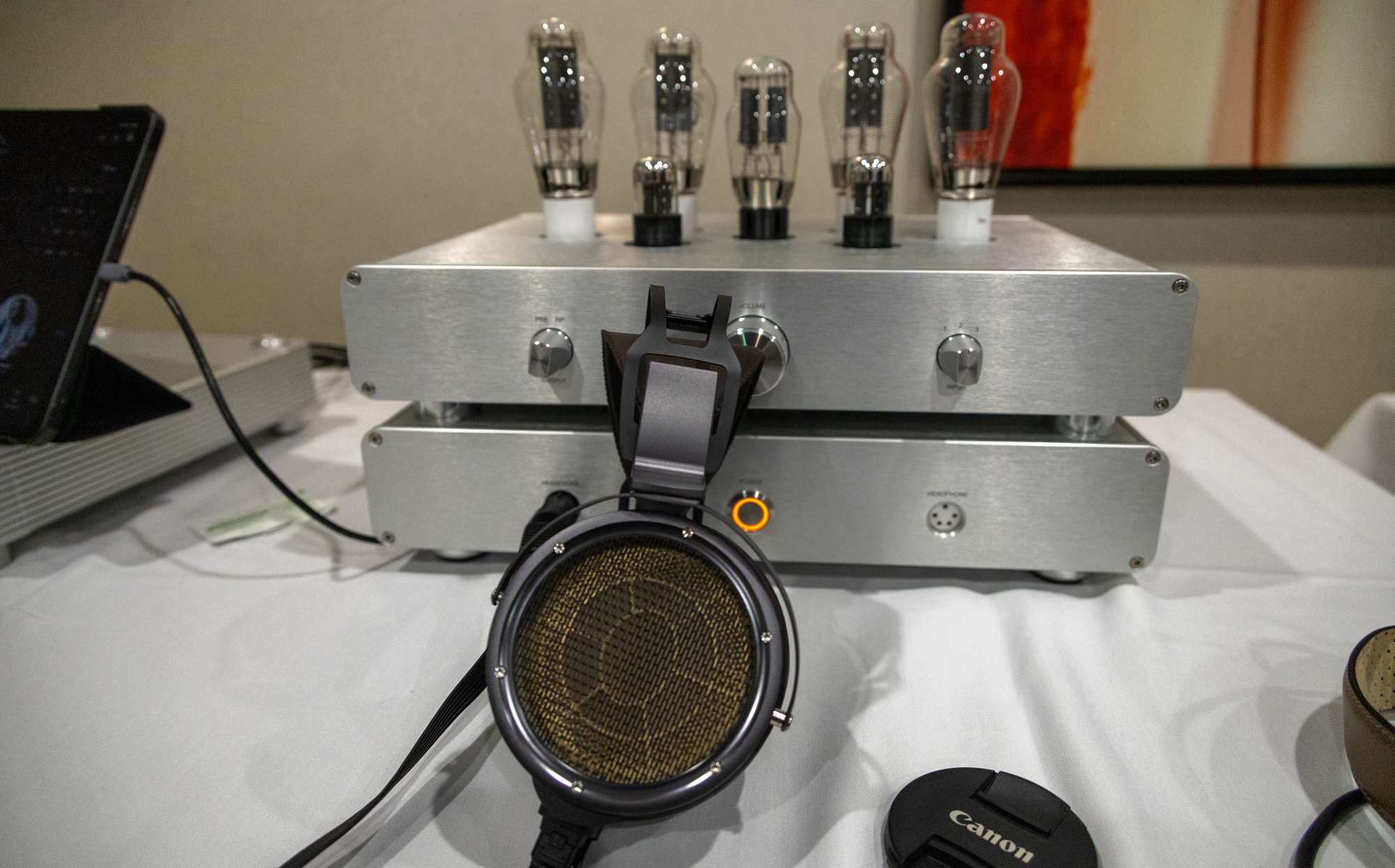
As for Abyss Headphones, I noticed plenty of 1266 TC on the show floor and a handful of Dianas. However, the one note I want to comment on was DMS’s unique pair of Dianas. I heard them on my home rig and briefly at CanJam SoCal and confirmed that I love what he’s done to the Franken-Diana, prioritizing a sizable sub-bass shelf with a comfortable planar magnetic headphone that’s reminiscent of Hifiman’s HE-6.
ZMF Headphones
Home to this year’s most artistic line-up of new releases, ZMF came to CanJam SoCal with a dedicated room for a deep inventory of their headphones. I even saw an Ori in the corner!

The Caldera and Atrium are the two newest releases to me, with the Caldera debuting at CanJam SoCal and the Atrium debuting earlier this year. I may like the Atrium’s grill pattern more, but the Caldera was an ambitious task for ZMF to accomplish. As I have spectated through the years, every driver type has its fan base and supposed champions, so I feel that a brand so well-known for dynamic drivers and timbre would pursue a headphone around a planar driver. One of the largest issues with planar magnetic headphones is timbre and decay characteristics. Headphones like the Susvara and HE1000 sound like the trailing ends of notes have a non-linear decay, while other planar magnetic flagships like the Abyss 1266 TC and Dan Clark Stealth reproduce instruments with an unnatural lens that makes it difficult to convince yourself you’re hearing live instruments recorded from the real world. There’s always some fatal flaw behind a planar magnetic headphone compared to my dynamic driver references, but the Caldera managed to bridge a lot of gaps while still maintaining a warmer “ZMF house sound” frequency response. Is the Caldera perfect? No. But, is the Caldera an enjoyable headphone? Yes.

In the ZMF room, I tried the Caldera on the dCS Lina, a variety of amplifiers and DACs, and some one-off custom tube amplifiers. I found my experiences with the Glenn amps to be the most enthralling, with the Cayin HA-300 MK II proving to be a distant second. The Caldera changed quite a bit depending on the amplifier pairing. The dCS Lina I felt was more revealing of the changes in pads and wood, but the most memorable experience came from the Glenn custom 45 amp. Those who are looking for “detail” or “resolution” from a planar might be better off seeking out an Abyss 1266TC or Hifiman Susvara. But one thing that washed over me as soon as I hit play was the absence of “planar” in my head. The treble was well-mannered, it didn’t encroach on grating. The more agreeable sound signature and lighter weight of the Caldera made for an enjoyable listen. Treble peaks were wide enough to be untroubling to the ear but narrow enough to maintain an overall relaxed balance of treble against the mids and bass.
Desiring some variety in your listening experiences, you could own a handful of similar headphones for the price of one Caldera and a trio of pad options. The Caldera sounds like the one headphone you could own with a complete set of compatible pads.
I never expected a ZMF planar magnetic headphone, and yet now putting those two ideas together of ZMF and planar magnetic headphone, the result is even better than I expected.
Revisiting Atrium cemented my opinion on the newest dynamic driver to the ZMF family: I would love to own one as a long-term ZMF fan. Sessions with the Ori, Eikon, Auteur, Verite, and (briefly at DMS’s office) Atrium all lead me to believe that I would love a custom shop version of the Atrium. The idea of a custom grill, stabilized wood design, and head-strap channels the same enthusiasm as getting a custom-tailored suit.




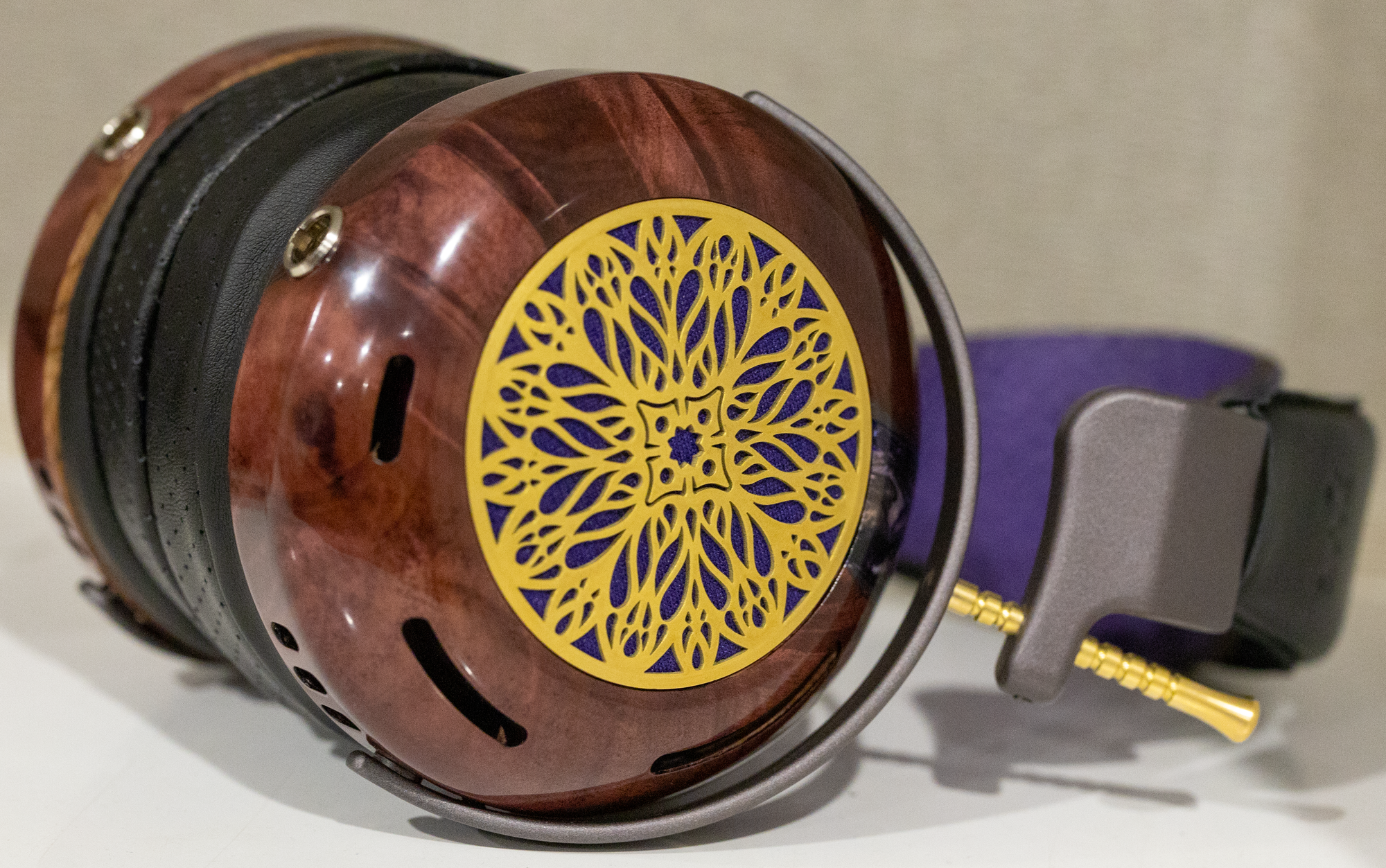
I want to commend Zach, Bevin, and the rest of the ZMF team for being gracious and professional hosts to everyone who entered their CanJam room.
That's all folks!
This year, I spent more time trying gear than I ever have before, taking the time to switch back and forth between variables at each table. I didn't retread a lot of old ground this CanJam, so only the notable highlights instead of everything already familiar to me that might have been new to other attendees.









I tried sushi for the first time. I spent most of my hours awake amongst friends. I met new faces in the community, and reunited with long-time favorites.
I cannot verbalize just how much fun I had the weekend this took place, and I don't think I wanted to be anywhere else.
A sincere thank you to:
Head-Fi and the staff that helped organize the event, Marriott Irvine for hosting CanJam, every single exhibitor that traveled to the venue, the Writing Staff at Den-Fi, Crin and Axel, Felix and Mikol, the whole crew of folks behind Headphones.com, the taco gang, and the all the friends that helped make this weekend so incredible!
-Flux
Comments?
Leave us your opinion.